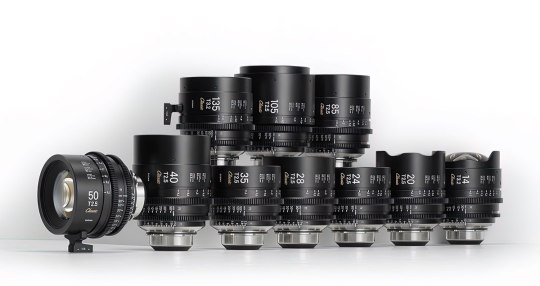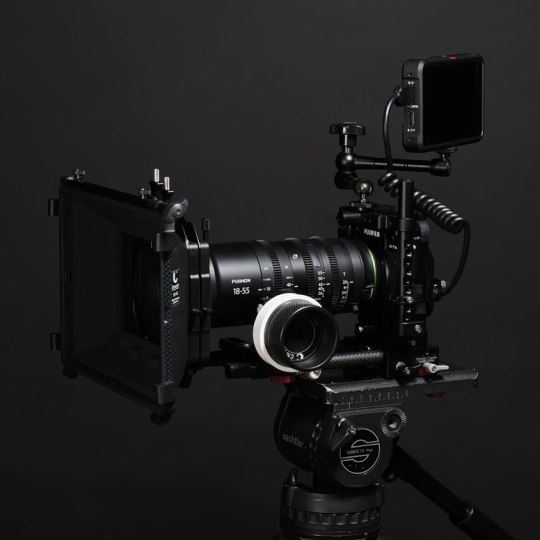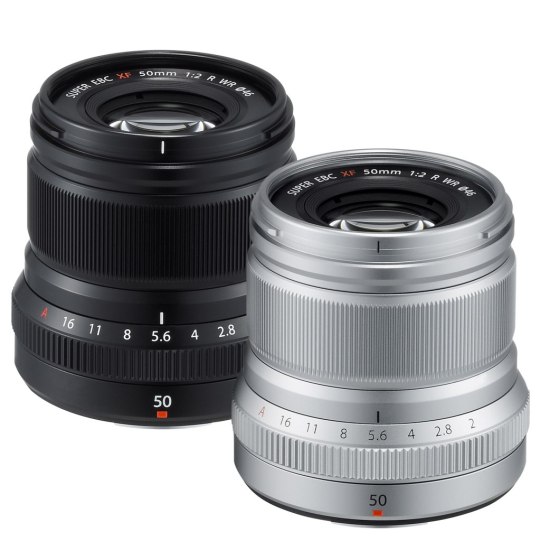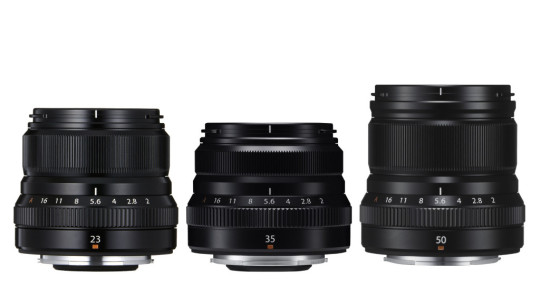#Summicron-R 50mm f/2.0
Text
The Two Most Useful Cinema Lens Focal Lengths for Narrative Cinematography?
The Two Most Useful Cinema Lens Focal Lengths for Narrative Cinematography?

View On WordPress
#28mm#40mm#42mm#60mm#Fujifilm XF 33mm f/1.4 R LM WR#Fujinon 23mm f/1.4 R LM WR#Fujinon XF 18mm f/1.4 R LM WR#Fujinon XF 27mm f/2.8#Fujinon XF 27mm f/2.8 R WR#Fujinon XF 50mm f/2.0 R WR#Fujinon XF 56mm f/1.2 R#Leica Summicron-C 40mm f/2.0#Minolta M-Rokkor 40mm f/2.0#perfect normal#standard normal
1 note
·
View note
Video
Bathtubs passing in the night by iain MacAdam
Via Flickr:
The iconic lodge peacock sign on the hill above Burton Drive. Randomly revisited these shots recently, I don't remember why. But we could use a break in the ocean and rocks over here I guess. Fuji X-E2 / 50mm Summicron-R v.1 (1968) (DSCF9369c)
Perhaps my fav car.
#Porsche#356#car#cars#vintage#dark#lowkey#Summicron-R 50mm F2 (I)#Summicron-R 50/2#Summicron-R#Summicron-R 1:2/50#Summicron-R 50mm#Summicron-R 50mm f/2.0#Summicron 50mm#Leica#monochrome#black and white#B&W#Cambria#Cambria CA#Burton Drive
0 notes
Text
Introduction to LEICA-R lenses | Budget Buyer's Guide
Introduction to LEICA-R lenses | Budget Buyer’s Guide
This website has been in existence (at the time of writing) for well over 3 year, but until now there hasn’t been a single proper mention of any Leica lenses, which is clearly not right because Leica-R Lenses in particular are incredibly popular for video use. I can’t try them all, but thankfully a fellow vintage lens user, Johan Cederholm (www.johancederholm.com) has a nice little set and know a…
View On WordPress
#135mm#15mm#19mm#28mm#50mm#60mm#90mm#Cine#cinemodded#cinevised#ELMAR#ELMARIT#f/1.4#f/2.0#f/2.8#leica#leica r#modded#NOCTILUX#SUMMICRON#SUMMILUX#SUPER-ELMAR#Video
1 note
·
View note
Text
Noam Kroll: Directing & DP’ing a New Micro-Budget Feature: Gear, Schedule, Workflow Breakdown
Noam Kroll: Directing & DP’ing a New Micro-Budget Feature: Gear, Schedule, Workflow Breakdown

View On WordPress
#APS-C#Atomos Shinobi#Fujifilm X-T4#Fujinon XF 50mm f/1.0 R WR#Fujinon XF 50mm f/2.0 R WR#Leica Summicron-R 50mm f/2.0#Noam Kroll#SmallRig#Super 35
0 notes
Text
youtube
“Is the Fujifilm X-T4 the king of APS-C cameras? We have the answer!…”

Fujifilm X-T4 with Fujinon XF 16-55mm f/2.8 R LM WR zoom lens.
Commentary
One design inspiration for Fujifilm’s X-T4? Leica Leicaflex SL with Summicron-R 50mm f/2.0, made in 1968. The SL2 is considered one of the best analog-era 35mm SLRs.
I missed out to seeing a pre-production Fujifilm X-4 at Fujifilm Australia’s event at Ted’s World of Imaging earlier this year when COVID-19 struck home and I could not attend due to highly susceptible family members.
Such touch-and-try preview events can be useful but production versions are the real deal when it comes to assessing potential new hardware purchases.
DPReview is in prime position for obtaining early production releases and recently published its two-hander video review of the Fujifilm X-T4 alongside an in-depth text review plus image gallery.
A cursory skim through confirms my initial assessment of the desirability of the X-T4 for documentary stills photography and video production as an independent self-funded practitioner without the means to acquire every bit of hardware that comes down the turnpike, so I will be forgoing an X-T4 unless circumstances change.
Should some of us wait for the X-H2? Fujifilm X-H1 with VPB-XH1 battery grip and Fujinon XF 16-55mm f/2.8 R LM WR professional zoom lens.
Or we just might win the lottery. Ha!
COVID-19 and its worldwide economic havoc and consequent uncertainty for independent creatives means more belt-tightening and skipping over new models while trying to get the best out of past purchases.
There is plenty to like about the X-T4 for stills and video, especially video, and it is clearly one of the current best options for available light documentary work in either.
It is excellent to see that Fujifilm has now entered the small camera IBIS era (in-body image stabilization) and is reportedly approaching the IBIS in Panasonic’s Lumix DC-GH5, DC-G9 and S-Series 35mm cameras such as the Lumix DC-S1H, DC-S1 and DC-S1R.
Cinematographer, director, producer, writer Emily Skye of She Wolf Films production company with Panasonic Lumix DC-GH5 camera.
Some reviewers are speculating that Fujifilm may issue firmware updates to improve the X-T4’s IBIS, and that will be quite an achievement if they do so.
I have the most experience with the GH5’s stabilization in combination with non-stabilized autofocus lenses like those in Olympus’ M.Zuiko Pro range as well as manual-focus vintage lenses of East German design and German or Japanese manufacture, and can testify to the camera’s excellent IBIS for stills and video.
My baptism into the joys of IBIS occurred with my still-beloved Panasonic Lumix DMC-GX8 during a vacation away from Fujifilm cameras when the company had yet to get its head round video.
Australian photojournalist Daniel Berehulak using Panasonic Lumix DMC-GX8’s fully articulated LCD monitor. Now we have full articulation in the X-T4!
The GX8 has an earlier, stills-only version of IBIS than the GH5, but I soon discovered how useful, essential even, stabilization is for available darkness documentary work and I cannot imagine ever going back to non-stabilized cameras or at least non-stabilized lenses on such cameras.
Subsequently I picked up a copy of the legendary though often overlooked Panasonic Lumix G Vario 12-32mm f/3.5-5.6 Aspheric Mega OIS stabilized zoom lens and would have added the equally impressive Panasonic Lumix G Vario 35-100mm f/4-5.6 Aspheric Mega OIS zoom, had I found a secondhand copy at a good price at the time.
Panasonic DMW-XLR1 Microphone Adapter for Panasonic Lumix G and S-Series cameras. Fujifilm needs to make one of these for its more video-oriented cameras.
Without the pleasure of access to a production version of the Fujifilm X-T4, I am reluctant to express any opinions about it here so have added links to articles by well-qualified reviewers in the list of links below.
Fujifilm X-T4
Fujifilm X-T4 with Fujifilm VG-XT4 Vertical Battery grip and Fujinon XF 18-55mm f/2.8-4.0 R LM OIS kit zoom lens.
Fujifilm X-T4 with Fujifilm VG-XT4 Vertical Battery grip containing Fujifilm’s new larger NP-W235 Lithium-Ion batteries.
Fujifilm X-T4 with Fujifilm VG-XT4 Vertical Battery grip and Fujinon XF 18-55mm f/2.8-4.0 R LM OIS kit zoom lens, in portrait or vertical orientation.
Fujifilm X-T4 with vari-angle LCD monitor swung out.
Fujifilm X-T4 with Vario-angle LCD monitor in closed position, excellent for protecting the monitor when not needed.
Fujifilm X-T4 with Fujinon XF 16-80mm f/4.0 R OIS WR zoom lens.
Fujifilm NP-W235 Lithium-Ion Battery, rated at 7.2V, 2200mAh, much improved over the smaller batteries for the X-T3, X-Pro3 and other, older models.
Fujifilm BC-W235 Dual Battery Charger enables charging two NP-W235 batteries at the same time.
The Fujifilm X-T4 for moviemaking

Fujifilm X-T4 rigged for video production. Image courtesy of Fujifilm-X.com.
Links
Camera Labs – Fujifilm XT4 review
DPReview – DPReview TV: Fujifilm X-T4 review
DPReview – Fujifilm interview: ‘We will get through this crisis together’
DPReview – Fujifilm X-T4 full-production sample gallery
DPReview – Fujifilm X-T4 review
DPReview – Fujifilm X-T4 Review: Hands-on with Fujifilm’s newest flagship camera – video
DPReview – Fujifilm X-T4 vs X-H1: should you upgrade or hunt for a bargain?
DPReview – Fujifilm X-T4 vs X-T3: Which should I buy – and is it worth upgrading?
EOSHD.com – Canon 1D X Mark III Review // Filmmaking, video and cinema camera. Get the Fuji X-T4 instead?
Fuji Rumors – DPRTV Fujifilm X-T4 Review: “One of the Best Hybrid Cameras, But if You are a Video Shooter, Maybe Wait for Fujifilm X-H2” – excellent summary of major posts in the video.
Fujifilm-X – X-T4
jonasrask|photography – Fujifilm X-T4 first look preview – Closer to technical bliss.
News Shooter – Fujifilm X-T4 improves on an already solid camera
She Wolf Films – cinematographer, director, producer, writer Emily Skye’s production company.
Thomas Fitzgerald Photography – Thoughts on the Fuji X-T4
DPReview: Fujifilm X-T4 Review: Hands-on with Fujifilm’s newest flagship camera – Commentary "Is the Fujifilm X-T4 the king of APS-C cameras? We have the answer!..." Commentary I missed out to seeing a pre-production…
0 notes
Text
Fujifilm has added the third lens to its rangefinder-style lens set with the announcement of its Fujinon XF 50mm f/2 R WR, adding the equivalent of the 75mm focal length to the XF 23mm f/2 and XF 35mm f/2 lenses equivalent focal lengths of 35mm and 50mm.

The Fujinon XF 50mm f/2 R WR is available in black or silver.
So now Fujifilm camera users can own a matched set of three lenses that have blazingly fast autofocus, are weather resistant, have small front ends for attaching 46mm diameter protection filters, and that have equivalent focal lengths of 35mm, 50mm and 75mm.
When trying out the XF 23mm f/2 and XF 50mm f/2 on my X-Pro2 last year, I found their small size and tiny front elements perfectly complemented the camera’s discreet look, with and without lens hoods attached.
The X-Pro2 is, for me, a cross between the Leica rangefinder cameras I built my style on throughout my analog photographic career and the 120 film rangefinder cameras I came to love just as much after discovering them later during that time.
Although I appreciate the bokeh contrasting with the sharpness of my Fujinon XF 23mm f/1.4 R and XF 56mm f/1.2 R lenses, they can feel a little oversized and somewhat slower to focus when away from available darkness and out in the street compared to the 23mm and 35mm f/2 primes.
There is also the question of the wide front elements of the faster lenses intruding into the X-Pro2 OVF (optical viewfinder) window, something my Leica lenses were prone to as well but to a lesser degree.
I learned to account for that occlusion by training myself to see through both eyes while shooting, right eye through the OVF and left eye seeing the wider scene and especially lower left of frame.
The benefit of using lenses which don’t occlude the OVF window as much, as this trio is designed to do, is you can concentrate more on what you are seeing through the OVF while directing your left eye to see the broader scene, alert for the marvellous serendipities that make rangefinder photography so unique and so unlike shooting with DSLR and EVF-only cameras.

The 23mm, 35mm and 50mm Fujinon f/2 lens trio. In 35mm equivalent terms, these equate to 35mm, 50mm and 75mm. Images not to scale.
I throughly enjoyed photographing with the XF 23mm f/2 and 35mm f/2 lenses last year and may well add one or both to my kit in future. I am very much looking forward to trying out the XF 50mm f/2 this year.
An obvious comparison
So many X-Pro2 users familiar with Leica M-System rangefinder cameras and lenses have compared Fujifilm’s f/2 trio with Leica’s Summicron f/2 lenses.
There is some relevance in that comparison given the Summicrons I owned and used (I borrowed the 75mm for magazine assignments when I could as I did not own one) were pleasurable and fast to use, and were as adept in available darkness as under bright sunlight.

I cannot help but make the analogy to Leica’s f/2 rangefinder lens set comprising its 18mm, 35mm, 50mm, 75mm and 90mm Summicron-M and Apo-Summicron-M lenses. Of these my favourites during my Leica rangefinder days were the 28mm, 35mm and 75mm, with the 50mm and 90mm less frequently used.
Leica’s current Summicron lens set is five-strong, comprising 28mm, 35mm, 50mm, 75mm and 90mm lenses. My personal pick of those five focal lengths would be the 28mm, the 35mm and the 75mm. In Fujinon APS-C terms that is 18mm, 23mm and 50mm.
If Fujifilm could now turn its attention to radically revamping its current 28mm lens equivalent, the Fujinon XF 18mm f/2 R, in the style of its f/2 trio then I would be enormously grateful.

Fujifilm, please update the ageing XF 18mm f/2 R so it has the same marvellous traits as your f/2 rangefinder-style prime lens trio, making it a quartet. I miss the 18mm (28mm in its 35mm format equivalent) focal length terribly.
Specifications:
Click here to download the specifications chart for the Fujinon XF 50mm f/2 R WR lens.
Image Credits:
Header aka featured image created in Photoshop by Carmel D. Morris.
Fujifilm Adds Fujinon XF 50mm f/2.0 Short Telephoto to Complete Its Rangefinder-Style Lens Trio Fujifilm has added the third lens to its rangefinder-style lens set with the announcement of its Fujinon XF 50mm f/2 R WR, adding the equivalent of the 75mm focal length to the XF 23mm f/2 and XF 35mm f/2 lenses equivalent focal lengths of 35mm and 50mm.
#Fujifilm#Fujifilm X-Pro2#Fujifilm X-T2#Fujinon XF 18mm f/2 R#Fujinon XF 23mm f/1.4 R#Fujinon XF 23mm f/2 R WR#Fujinon XF 35mm f/2 R WR#Fujinon XF 50mm f/2 R WR#Fujinon XF 56mm f/1.2 R#rangefinder#rangefinder cameras#rangefinder-style
0 notes